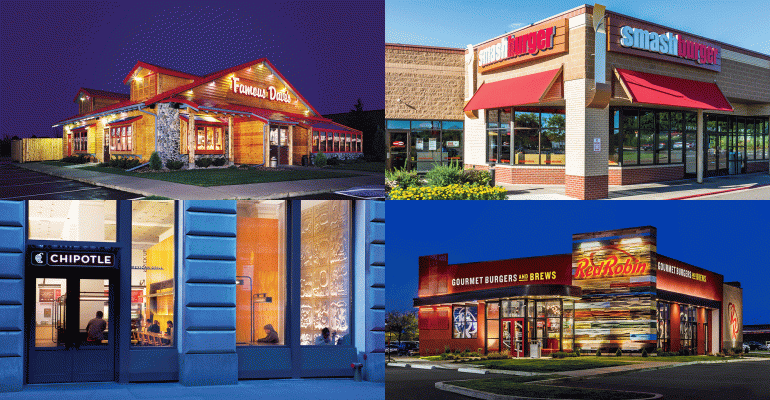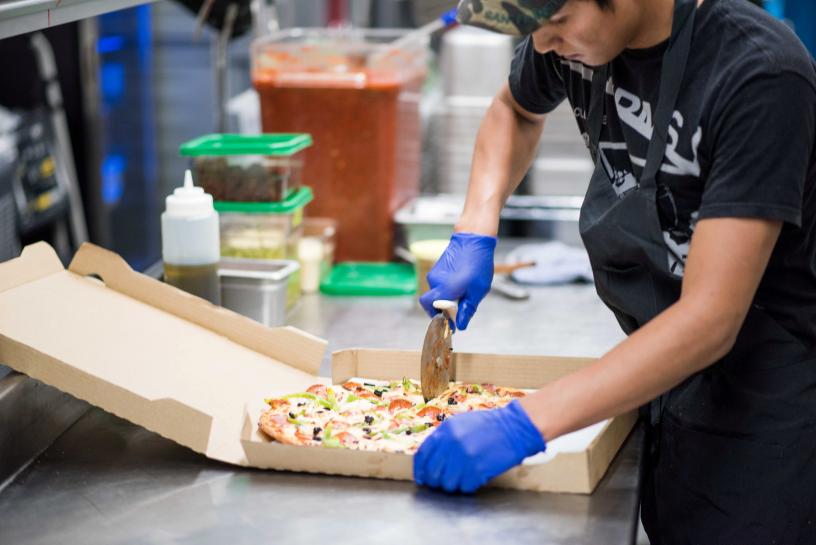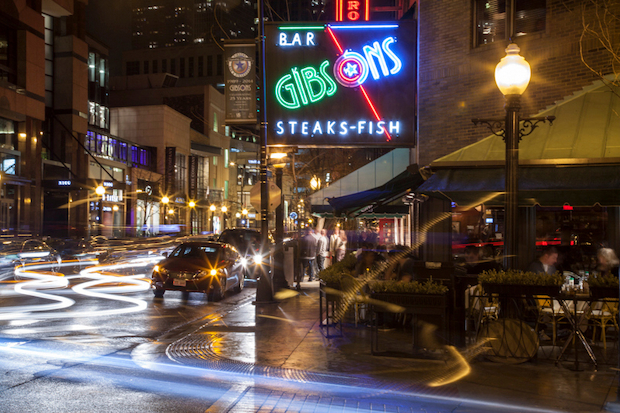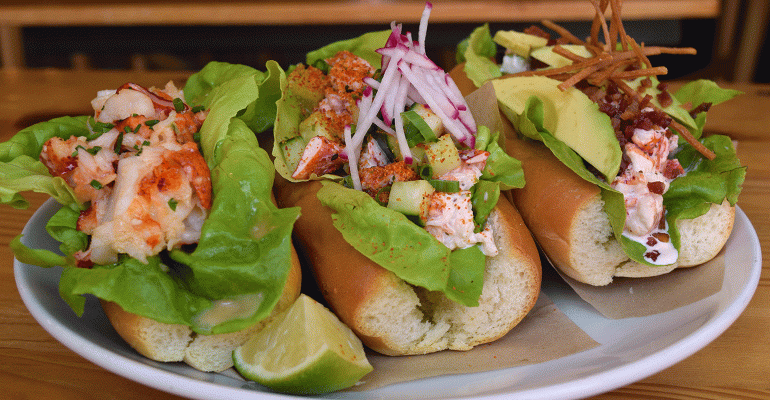
Nov 16, 2017
Mark Caro | Chicago Magazine | November 13th, 2017
They find your photo online and study it so they’ll recognize you when you walk in the door. They Google you and check you out on LinkedIn, Facebook, and Instagram to see what you do for a living and to take note of your interests and passions. You’re a Lenny Kravitz fan? Hey, they have a server who loves “Fly Away,” so she’ll be working your table. Maybe you’ll hit it off.
Once you arrive, you feed the restaurant more data. Remember that time you said the fish was too salty? That was duly noted, both by the chef, who double-checked the preparation, and by the front-of-house staff, who added a possible salt sensitivity to your profile. Remember when you ordered the wine pairings, and by the time the Tokay arrived, you were teetering into your banquette neighbor? You may be receiving lighter pours on your next visit, not that anyone would be so uncouth as to point this out to you.
If you went to Grace, Curtis Duffy’s three-Michelin-star temple on Randolph Street, and complained loudly that the restaurant doesn’t offer Burgundy or Bordeaux wines, you might be labeled a PP, or “potential problem.” If you didn’t understand the concept of the tasting menu and insisted on ordering a steak, you may have earned the designation FOW, “fish out of water.” If you watched For Grace, the documentary about Duffy, and now want to meet the celebrity chef, you’re dubbed a Twizzler (Duffy’s favorite candy). If you’re so lucky as to be a celebrity yourself, Grace may refer to you as a TD (for Tony Danza; partner and general manager Michael Muser admits this term “makes no sense,” but he hates “VIP”). More of an Alinea habitué? Maybe the restaurant will have you down as a FOTAG (friend of the Alinea Group) or a FONK (friend of Nick Kokonas, the company’s co-owner) or a FOGA (friend of Grant Achatz, the chef). “Then we have the PON, ‘person of note,’ ” Kokonas says. “You’re not a regular necessarily. It’s just like, Hey, you might be an artist or this or that.” DineAmic Group (Bar Siena, Prime & Provisions, Public House) uses PPX, for personne particulièrement extraordinaire.
That everyone wants to be treated as a VIP, or whatever you want to call it, is a given. But in this era of social media and big data, many restaurants are no longer lavishing extra attention and scrutiny just on famous people, big spenders, and food critics. Now—assuming you’re the one making the reservation—they’re digging up all they can on you.
CONTINUE READING

Nov 13, 2017
Jonathan Maze | Nation’s Restaurant News | November 10th, 2017
Chains are slowing growth and cutting units in 2017 amid weak sales and traffic.
After years of seemingly unstoppable growth, the restaurant industry has stepped on the brakes in 2017.
Several chains in their latest earnings calls have said they plan on slowing unit growth or stopping it altogether amid weak same-store sales and traffic, as well as concerns over rising construction and real estate costs.
Many others, meanwhile, are closing units, as those sales and traffic challenges create underperforming locations that lose money and hurt overall profitability.
Here’s a look at the chains that are closing locations or slowing their growth this year or next.
CONTINUE READING

Nov 9, 2017
Lisa Baertlein | Reuters | October 30th, 2017
LOS ANGELES (Reuters) – After helping customers bypass dining rooms, food delivery company DoorDash is giving chefs the option to do the same with delivery-only “virtual” restaurants run out of its new commissary in Silicon Valley.
Bay Area restaurateur Ben Seabury, who wanted to test the delivery-only concept as well as demand for his upscale “The Star” pizzeria concept in San Jose, California, was first to sign up. He took one of the four kitchens in DoorDash’s new 2,000-square-food commissary that opened earlier this month.
The launch of DoorDash Kitchens comes as restaurants are experimenting with ways to cut costs on labor and rent while adapting to fast-changing consumer tastes and demands in a highly competitive market.
“I jumped at the opportunity to kill two birds with one stone,” said Seabury. Privately held DoorDash will exclusively deliver his food from the commissary, where rent is based on a percentage of gross sales.
“The landscape of dining in America is changing,” said Seabury, whose portfolio includes six traditional restaurants that are on pace to do $18 million in sales this year. Delivery accounts for about 20 percent of his overall restaurant business.
DoorDash Kitchens is also an option for restaurants looking to open overflow kitchens for delivery or catering, said Broderick McClinton, general manager of DoorDash for Business.
CONTINUE READING

Oct 31, 2017
David Matthews | DNAinfo Chicago | October 30th, 2017
DOWNTOWN — Gibsons Bar & Steakhouse grossed nearly $25 million last year, tops among all Chicago restaurants, according to a new study.
The venerable Rush Street steakhouse is one of nine Chicago restaurants on Restaurant Business’ list of the top 100 independent restaurants in the country.
That’s down from 10 in 2015, when the Greek Islands restaurant at 200 S. Halsted St. clocked in at No. 99 in the country with $12.2 million in gross sales.
Gibsons, at 1028 N. Rush St., has led all Chicago restaurants in gross sales since at least 2014, according to the report. Primehouse, the steakhouse in the James Hotel at 616 N. Rush, led all Chicago restaurants that made the high-grossing list, with an average check of $98 last year.
Quartino Ristorante, 626 N. State St., led all Chicago restaurants on the list with nearly 440,000 meals served last year.
Restaurant Business said it calculated its totals using surveys or estimates based on “public information, similar concepts and other factors.”
The rankings apply only to non-chain restaurants with no more than five locations.
Here’s the list:
•No. 1 (10 nationally): Gibsons Bar & Steakhouse, 1028 N. Rush St.
Gross sales: $24.7 million
Average check: $75
Meals served: 363,301
•No. 2 (20): Joe’s Seafood, Prime Steak & Stone Crab, 60 E. Grand Ave.
Gross sales: $21.2 million (estimate)
Average check: $80 (estimate)
Meals served: 265,000
CONTINUE READING

Oct 23, 2017
Lisa Jennings | Restaurant Hospitality | October 19, 2017
Chicago pizzeria owner Simon Mikhail had been working with UberEats for about a year when the third-party delivery service approached him last year with a proposition.
UberEats users in his neighborhood had been searching for “chicken” through the delivery service’s app, they told him, but there wasn’t much available. Was Mikhail interested in filling that void?
“I said, ‘I can do fried chicken. I have a fryer,’” said Mikhail, owner of Si-Pie Pizzeria.
But rather than adding fried chicken his pizzeria’s menu, UberEats worked with Mikhail to create a new concept, dubbed Si’s Chicken Kitchen, which was available only through the app as a virtual restaurant without any brick-and-mortar presence.
The virtual Si’s Chicken Kitchen has been open for about a year and averages about $1,000 per week in sales of fried chicken, chicken tenders and chicken pizza — all made in the pizzeria’s kitchen. Sales have already surpassed delivery sales of the original pizza concept.
“I’m selling more fried chicken than pizza for delivery,” Mikhail said.
With a second pizzeria location in the works, Mikhail also plans to do separate virtual concepts from that kitchen too, including a possible delivery-only burger restaurant.
The notion of virtual restaurants isn’t new. As delivery has gained momentum, a growing number of operators have launched delivery-only concepts, and not just with UberEats.
But the fact that UberEats is looking to use its data to identify locations where such virtual concepts would work brings a new weapon to the competitive delivery battlefield.
CONTINUE READING





